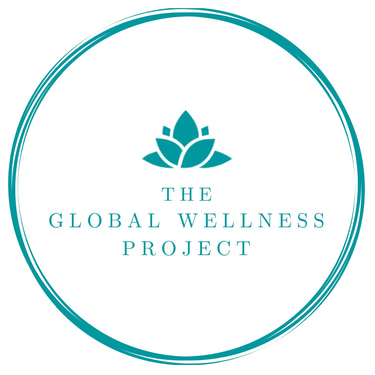Exploring the Global Wellness Economy Monitor 2024 - Part V
Promotes building strong relationships, effective communication, and community engagement for healthier social interactions and well-being.
WELLNESSPREVENTIVE MEDICINEHEALING
12/9/20243 min read


Part V: Social Wellness – Building Healthy Connections in an Interconnected World
Introduction
Social wellness is a key aspect of overall health, focusing on the quality of relationships and the ability to interact harmoniously within communities. The Global Wellness Economy Monitor 2024 highlights the increasing importance of social wellness, with a rising awareness of how social connections influence mental, emotional, and physical health. In today’s interconnected world, social wellness is essential not only for fostering personal well-being but also for creating resilient, thriving communities. In this article, we explore the fundamental components of social wellness, emerging trends, and actionable steps to nurture positive relationships and community engagement.
Understanding Social Wellness
Social wellness refers to the ability to form positive relationships, communicate effectively, and interact meaningfully with others in various social contexts. Strong social connections are crucial for reducing stress, promoting emotional well-being, and enhancing overall health. Studies show that people with robust social networks tend to live longer and experience lower rates of mental illness, such as depression and anxiety.
Core Components of Social Wellness
Communication Skills
Effective communication is the foundation of strong relationships. Social wellness involves the ability to express oneself clearly, listen actively, and resolve conflicts in a constructive way. Good communication fosters understanding and emotional support, which are essential for healthy social interactions.Social Support Systems
Having a strong support system of family, friends, and colleagues is vital for social wellness. Social support buffers against stress, promotes positive emotional health, and provides a sense of belonging. Studies have shown that individuals with strong social networks are less likely to experience chronic health conditions.Community Engagement
Active participation in community activities enhances social wellness by fostering a sense of belonging and purpose. Volunteering, attending local events, and joining social groups contribute to personal fulfillment and community cohesion.Healthy Boundaries
Establishing and respecting personal boundaries is essential for maintaining healthy social relationships. Emotional and physical boundaries help individuals manage stress and avoid burnout from social interactions.
Emerging Trends in Social Wellness
Digital Social Connections: While face-to-face interactions remain crucial, digital platforms like social media, video calls, and collaborative tools have expanded the scope of social connectivity, especially in the wake of the COVID-19 pandemic.
Social Wellness in the Workplace: Organizations are increasingly focusing on team-building and creating supportive workplace environments to enhance employee social well-being and collaboration.
Intergenerational Socializing: Programs that encourage interaction between different generations, such as mentoring and community activities, are gaining traction, fostering mutual respect and learning.
Social Wellness Tourism: Travel and tourism focused on social wellness are becoming more popular, with group retreats and wellness vacations designed to foster community and connection.
Global Insights
The Global Wellness Economy Monitor 2024 reveals that social wellness initiatives are growing globally, especially in North America and Europe, where work-life balance and community-building are prioritized. In Asia-Pacific, there is an increasing trend towards collective well-being, where social harmony is deeply embedded in cultural practices. Social wellness programs are being integrated into both the workplace and public health systems worldwide.
Practical Strategies for Social Wellness
Cultivate Meaningful Relationships: Focus on building relationships based on trust, empathy, and mutual respect. Spend quality time with family and friends, and prioritize emotional support in these interactions.
Engage in Community Activities: Join local clubs, volunteer groups, or participate in neighborhood events to foster a sense of belonging and contribute to the well-being of your community.
Practice Active Listening: Improve your communication skills by truly listening to others, offering emotional support, and responding with empathy.
Set Healthy Boundaries: Recognize your personal limits and set boundaries to protect your emotional and physical well-being in social situations.
Leverage Technology for Connection: Use digital platforms to stay connected with loved ones, especially when physical distance is a barrier, but balance this with in-person interactions to avoid digital fatigue.
The Role of Social Wellness in the Global Wellness Economy
As individuals increasingly recognize the importance of social health, investments in social wellness programs and initiatives have surged. The Global Wellness Economy Monitor 2024 reports that social wellness is now seen as an integral part of personal and organizational wellness strategies. Companies are investing in team-building activities, community outreach, and mental health initiatives to support employees’ social well-being. Similarly, public health initiatives are focusing on creating social networks to reduce isolation and improve community health.
Conclusion
Social wellness plays a vital role in enhancing overall health and well-being. By cultivating meaningful relationships, engaging in community activities, and practicing effective communication, individuals can build a strong social foundation that supports emotional resilience and personal fulfillment. As social wellness continues to gain global attention, its role in fostering healthier individuals and communities will remain indispensable.
Citations
Global Wellness Institute. (2024). Global Wellness Economy Monitor 2024.
Cohen, S., & Wills, T. A. (2020). Stress, social support, and the buffering hypothesis. Psychological Bulletin, 98(2), 310-357. This paper discusses the significant impact of social support in mitigating the effects of stress.
Green, J., & Stone, A. (2021). Social engagement and its benefits for mental and physical health. American Journal of Public Health, 111(6), 1057-1064.
Ryan, R. M., & Deci, E. L. (2021). Self-determination theory and the facilitation of intrinsic motivation, social development, and well-being. American Psychologist, 55(1), 68-78.
Connect
Explore wellness topics and connect with providers.
Contact Us
Join
info@theglobalwellnessproject.com
© 2024. All rights reserved.
